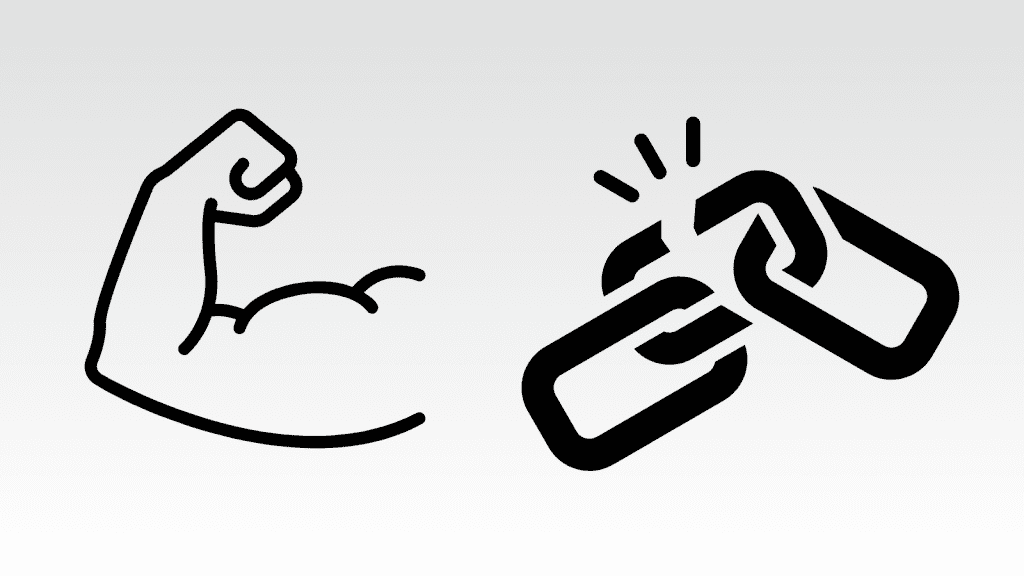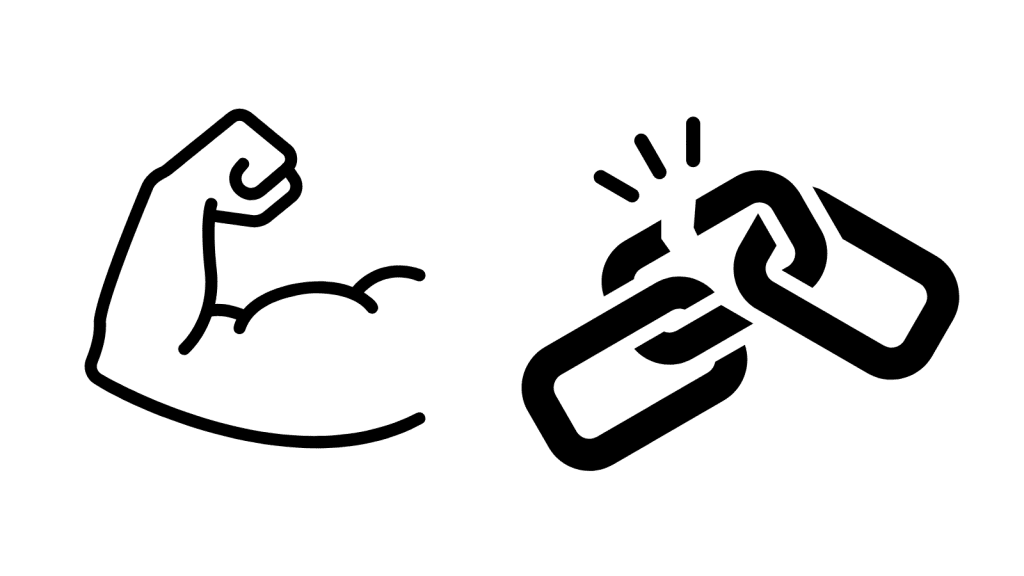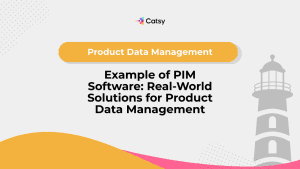DAM Software vs. Traditional Cloud Storage Tools: A Comparative Analysis

- DAM software outperforms traditional storage solutions in organizing, securing, and managing digital assets.
- Companies of all sizes handling product-related digital content benefit significantly from DAM software's advanced features and efficiency.
- EC-DAM, a specialized DAM solution, is ideal for product-based businesses managing multiple sales channels.
In this Article
A typical company can house thousands of digital assets, from product images, audio files, and videos to brand elements like logos and color palettes. These assets fuel marketing campaigns, create brand identity, and ultimately drive revenue. However, managing this wealth of digital content can be a challenge.
Some companies rely on traditional storage solutions like hard drives and cloud folders. While these methods might seem convenient initially, they often lead to scattered files, security concerns, and wasted time searching for the right asset.
This blog post compares DAM software and traditional storage solutions. It explores the strengths and weaknesses of each approach, helping you decide which method is best for managing your valuable digital assets securely and effectively.

What are Traditional and Cloud Storage Solutions?
Traditional storage solutions for digital assets are the conventional methods brands use to store and organize digital files. These are typically the first options many companies consider when accumulating digital assets. Some common examples include:
- Local storage (hard drives, SSDs): This involves storing files directly on individual computers.
- External hard drives and USB drives: These portable devices offer a way to move files around and create backups, but they can be easily lost, damaged, or stolen.
- Network-attached storage (NAS): A dedicated storage device connected to a network allows multiple users to access files centrally. However, NAS devices require some technical expertise to set up and manage.
- File servers: These are dedicated computers on a network that store and manage files for multiple users. They offer greater security and scalability than NAS but have higher setup and maintenance costs.
- Cloud storage: Platforms like Dropbox, Google Drive, and Microsoft OneDrive offer online storage accessible from any device with an internet connection. They are convenient for individual use and basic collaboration.
These solutions primarily focus on the storage aspect of digital asset management. They provide a place to keep files and sometimes allow for basic organization through folder structures. While they can be helpful in smaller-scale operations or personal use, they often fall short when it comes to the complex needs of businesses managing large volumes of digital assets.
Traditional storage solutions’ simplicity can be both a strength and a weakness. On the one hand, they’re often easy to set up and use. On the other hand, they lack many advanced features for efficient asset management in a professional setting.

Strengths and weaknesses of traditional and cloud storage services
So far, the discussion hints at what challenges users should expect when choosing a cloud storage system like Dropbox to store and manage digital assets. Let’s look into this aspect deeper and understand where the choice falls short and where it meets expectations.
So, when can traditional storage solutions be advantageous?
- Most are easy to set up: Most traditional methods require minimal technical expertise. For instance, saving files directly to your computer’s hard drive (local storage) or using a USB drive involves minimal setup. This can be ideal for small teams or users needing basic storage.
- They are readily accessible: Local storage and external hard drives provide quick access to your files without an internet connection. This can be advantageous for situations where offline access is crucial, such as on-site presentations or editing projects without a stable internet connection.
- Potentially lower cost: In comparison of cloud storage and digital asset management, cloud or traditional storage solutions can be a more cost-effective option upfront for very small-scale needs. For example, a small marketing team might find that combining external hard drives and a basic cloud-based storage service plan is sufficient for their needs, avoiding the potentially higher costs associated with more complex digital asset management systems. However, be mindful of potential hidden costs down the line, such as wasted time searching for unorganized files, security breaches due to lack of robust access control, or the need to upgrade storage capacity as your digital asset collection grows.
It’s important to remember that these advantages are often limited in scope. As your digital asset collection grows or collaboration needs become more complex, the limitations of traditional storage solutions become more apparent.
And what are these limitations?
- Limited organization: Traditional storage methods typically rely on basic folder structures, which can quickly become unwieldy. Imagine a marketing team trying to locate a specific product image among thousands of files spread across multiple folders. Without advanced search or tagging capabilities, finding the right asset can be like searching for a needle in a haystack, wasting valuable time and resources.
- Security concerns: Many traditional solutions lack robust security features. For example, a shared network drive might allow anyone with access to view, edit, or even delete crucial files. On the other hand, cloud storage software, while convenient, can be vulnerable to breaches if not correctly configured. This lack of granular control over asset access can put sensitive brand materials at risk.
- Lack of scalability: As a company grows, so does its library of digital assets. A system that works for hundreds of files may buckle under the weight of thousands or tens of thousands. An e-commerce business might find its once-manageable product image folder becoming an unnavigable maze as its inventory expands, hindering efficiency and productivity.
- Version control issues: Traditional storage methods do not provide a robust system to track changes. As such, outdated versions of assets and files can be used mistakenly. Imagine the confusion and potential brand damage if an old logo is accidentally used in a major advertising campaign because it wasn’t marked as archived in shared folders and subfolders.
- Collaboration challenges: Traditional methods can make collaboration difficult, especially for teams working remotely. Emailing large files back and forth or dealing with conflicting edits on shared documents can lead to frustration and errors. A global marketing team trying to coordinate a campaign across multiple time zones might constantly battle file access issues and version conflicts.
These limitations highlight why many growing organizations eventually seek more robust digital asset management solutions to overcome these challenges. One solution that brands frequently choose for its robustness and effectiveness is digital asset management (DAM) software.

What is DAM Software?
DAM software is an information management technology designed to streamline the storage, organization, retrieval, and distribution of digital assets within an organization. As we learned earlier, digital assets can include many files, such as images, videos, documents, presentations, and other multimedia content.
A generic DAM software (you’ll learn later why there is a difference between generic and specialized DAM tools) provides additional functionalities beyond digital asset storage.
Key functionalities of generic DAM system
Organization and tagging
DAM systems allow users to create custom taxonomies tailored to specific needs. They can also apply multiple tags to each asset for easy categorization in the cloud-based DAM storage system. For instance, a product image could be simultaneously tagged with attributes like “cordless drill,” “18V battery,” “brushless motor,” and “product shot.” This multi-faceted organization allows for quick retrieval based on various criteria, saving time and reducing frustration in asset searches.
Version control (archival)
You can easily keep track of different versions of the same file when using DAM platform. For example, Catsy’s DAM automatically archives the previous version of an asset when you upload a new one. This feature allows teams and departments to track the evolution of an asset, compare changes over time, and revert to earlier versions if needed.
For example, suppose a power saw design goes through multiple revisions. In that case, the engineering team can easily access and compare all versions, ensuring they’re using the most up-to-date designs while maintaining a complete history of the development process.
Security and access control
Most robust DAM systems provide enterprise-level security features. Administrators can set up granular permissions based on user roles, departments, or specific projects. For example, a junior engineer might have view-only access to specific technical drawings, while a senior product manager has full editing rights.
Moreover, many DAM solutions offer features like watermarking, expiring links for external sharing, and detailed audit logs to track who accessed what and when. This level of control helps protect sensitive assets and maintain compliance with data protection regulations.
Collaboration features
DAM software facilitates secure and streamlined collaboration on digital assets, which extends beyond basic file sharing. One of the most crucial collaboration features is a brand portal.
A brand portal provides a self-serve hub where various teams can independently access and retrieve digital assets. This eliminates the need for constant requests to the marketing department, allowing teams and external partners to find the latest product images, spec sheets, and promotional materials independently. The feature controls access and ensures everyone works with the most current assets. The brand portal streamlines workflows, reduces redundant communication, and ensures consistency across all channels, thus enhancing overall collaboration and maximum efficiency.
Integration capabilities
DAM software doesn’t exist in isolation; it’s designed to work seamlessly with other business tools. This could mean direct integration with CAD software for engineers, connecting to a content management system for web teams, or linking with e-commerce platforms for sales teams. These integrations create a smooth flow of assets across different systems and departments, reducing manual transfers and the risk of using outdated assets.
Catsy’s DAM takes integration to a whole new level. The solution is fused with a product information management (PIM) system, creating a unified solution. The result is that users can view product information and related assets in one split screen. This configuration characterizes Catsy’s unified PIM and DAM as a product-centric solution, which is why some refer to Catsy’s DAM as DAM for e-commerce.
Metadata management
Most DAM software allows users to add details about the stored assets. This metadata helps contextualize the assets and enhance the quality of the content. It also improves searchability and ensures proper asset usage. For example, a power drill image with clearly defined usage rights and expiration dates helps prevent accidental use of assets in unauthorized contexts or beyond their licensed period.
Analytics and insights
DAM content analytics provide detailed insights into asset usage and user behavior. For instance, Catsy’s DAM allows you to track which assets are used most frequently, monitor download patterns, and identify underutilized content. This data can inform content creation strategies, improve resource allocation, and demonstrate ROI on asset production.
Sharing features
DAM offers various sharing options. For instance, APIs allow developers to integrate asset access into other applications or websites. On the other hand, marketers can leverage brand portals to provide a curated, branded experience for external partners or distributors to access approved power tool assets. Bulk export features enable teams to prepare assets for different platforms quickly – imagine preparing a single product image of a new impact driver for use on the website, in print catalogs, and across various social media platforms with just a few clicks.
These robust features work in concert to create a powerful ecosystem for managing digital assets, addressing the complex needs of modern organizations dealing with large volumes of digital content.
DAM Storage Solution vs. Traditional and Cloud Storage Tools: A Head-to-Head Comparison
Criteria | DAM Software | Traditional Storage Solutions |
Organization | All assets are stored in a single, easily accessible repository with advanced tagging and keyword search functionality. | Files often spread across multiple locations, such as hard drives, cloud folders, and emails, leading to disorganization. |
Security | Granular access control based on user roles and permissions. | Limited security features, often relying on simple password protection, making assets vulnerable to unauthorized access. |
Collaboration | Facilitates easy and secure sharing and collaboration with features like brand portals and secure links. | Collaboration often requires manual sharing of files, leading to potential security risks and version control issues. |
Scalability | Can handle increasing amounts of digital assets as the organization grows without losing performance or organization. | As the volume of assets grows, traditional storage solutions can become unwieldy and difficult to manage. |
Efficiency | Supports automated processes for approvals, publishing, and updates, saving time and reducing errors. | Tasks like approvals, searching, and sharing are often done manually, leading to inefficiencies and higher chances of errors. |
Cost | Initial investment may be higher, but efficiency gains lead to better ROI over time. | Although there may be lower upfront costs, the lack of efficiency and potential for security issues can result in higher long-term expenses and other hidden costs. |
Who Should Use a DAM Software?
Digital asset management software is a handy tool for marketers dealing with digital assets. It streamlines the asset management process, making it an essential solution for various organizations. As businesses increasingly rely on digital content to drive marketing, branding, and operational efficiency, a robust system to handle these assets becomes more critical.
But who should consider investing in DAM software? The ideal users of this solution include:
- Organizations with large volumes of digital assets: Companies that generate and manage a large amount of digital content require a centralized and efficient way to store and organize these assets. DAM software provides a scalable solution to handle large volumes of assets, ensuring all files are easily accessible, well-organized, and searchable. For instance, a power tool manufacturer managing extensive catalogs of product photos, technical drawings, and instructional videos across multiple product lines would find DAM invaluable for maintaining order and accessibility in their vast asset library
- Businesses requiring secure collaboration on digital assets: DAM software is crucial for organizations where multiple teams, departments, or external partners must securely access and work on digital assets. For example, a construction equipment company collaborating with distributors, marketing agencies, and internal teams on product launches and marketing campaigns would benefit from DAM’s secure sharing and collaboration features.
- Companies needing efficient workflows and centralized management: Organizations seeking to streamline their content creation, approval, and distribution processes will find DAM software particularly useful. For example, an industrial machinery manufacturer coordinating product documentation, marketing materials, and sales collateral across global offices would appreciate DAM’s centralized management and automated workflow capabilities.
- Any organization seeking to maximize the value of their digital assets: Businesses looking to leverage their digital assets fully can benefit from DAM software. This includes companies wanting to repurpose content across multiple channels, track asset usage, and ensure brand consistency. For example, a power tool brand that maintains consistent branding across e-commerce platforms, social media, and traditional marketing channels would find DAM software essential for managing and optimizing its digital asset utilization.

Final Thoughts
One thing is sure: DAM software offers superior organization, enhanced security, streamlined collaboration, and improved efficiency—all critical factors for businesses managing a wealth of digital assets.
It is also undisputable that any company dealing with products, whether manufacturers, distributors, or retailers, would find DAM software invaluable. This holds true regardless of the company’s size or stage – from startups to established conglomerates. Centralizing, organizing, and efficiently retrieving and distributing digital assets becomes increasingly crucial as businesses grow and their product lines expand.
However, not all DAM solutions are suitable for particular needs. For product-based businesses pursuing multiple sales strategies, including distribution, wholesale, and e-commerce, a specialized solution known as e-commerce DAM (EC-DAM) is the optimal choice.
EC-DAM is tailored to meet the unique needs of businesses operating digital storefronts and selling through distributors and retailers. These companies face the most complex and dynamic content management challenges, including frequent branding updates, regular campaign launches, and managing ever-growing product libraries. Moreover, they often utilize multiple sales channels – from social media and marketplaces to email and their websites – all of which require centralized management and alignment.
By choosing an EC-DAM solution, product-based businesses can not only overcome the limitations of traditional storage methods but also gain a competitive edge in managing their digital assets across various platforms and sales channels. This specialized approach ensures that companies can maintain brand consistency, streamline their workflows, and maximize the value of their digital assets in today’s fast-paced, multi-channel business environment.
Cloud storage solutions provide basic file storage and sharing capabilities. In contrast, DAM software offers a more comprehensive approach to managing digital assets. DAM solutions provide advanced features such as metadata management, version control, and workflow automation. They also offer robust search capabilities, allowing users to find assets based on various criteria beyond file names. Additionally, DAM software provides granular access controls, ensuring that the right people can access the right assets. Unlike cloud storage, DAM solutions are designed to efficiently handle large volumes of assets, making them ideal for businesses with extensive digital libraries.
DAM software enhances collaboration by providing a centralized platform where team members can access, share, and work on digital assets. Offering a single source of truth for all assets eliminates the need for lengthy email chains or confusing folder structures.
Large enterprises with vast digital libraries certainly benefit from DAM software. Similarly, small businesses enjoy significant advantages. For instance, DAM solutions offer improved organization, enhanced security, and streamlined workflows. This can lead to time savings, reduced risk of errors (like using outdated assets), and improved brand consistency. Small businesses in product-based industries, in particular, can benefit from specialized solutions like EC-DAM, which cater to the unique needs of companies managing multiple sales channels, including e-commerce.
DAM software employs several layers of security to protect digital assets. It offers granular access controls at the user level, allowing administrators to set specific permissions for different users or groups. This ensures that sensitive assets are only accessible to authorized personnel. Many DAM solutions also provide features like watermarking and expiring links for added security when sharing assets externally. At the system level, DAM software often includes encryption for data in transit and at rest, regular backups, and audit trails to track all asset-related activities. Some DAM solutions also offer compliance features to help businesses meet industry-specific data security and privacy regulations.
Adopting DAM software can present several challenges, primarily centered around cost, implementation complexity, and user adoption. However, these challenges can be effectively managed with proper planning and strategy.
- Cost:
- Consider long-term ROI, not just upfront costs
- Look for scalable pricing models
- Factor in efficiency gains and cost savings over time
- Implementation complexity:
- Choose a provider with robust onboarding support
- Consider a phased implementation approach
- Form a dedicated internal implementation team
- User adoption:
- Communicate benefits to all stakeholders
- Provide comprehensive training and user guides
- Designate “DAM champions” within each department
- Leverage customizable interfaces to match existing workflows
- Data migration and system integration:
- Develop a comprehensive migration strategy with your DAM vendor
- Clean up and organize existing assets before migration
- Ensure seamless integration with other critical business systems




